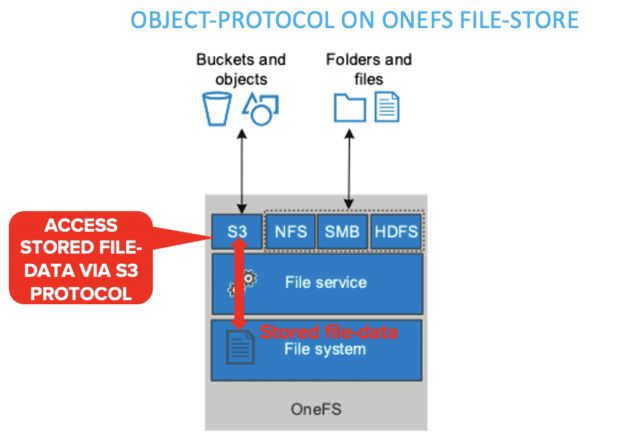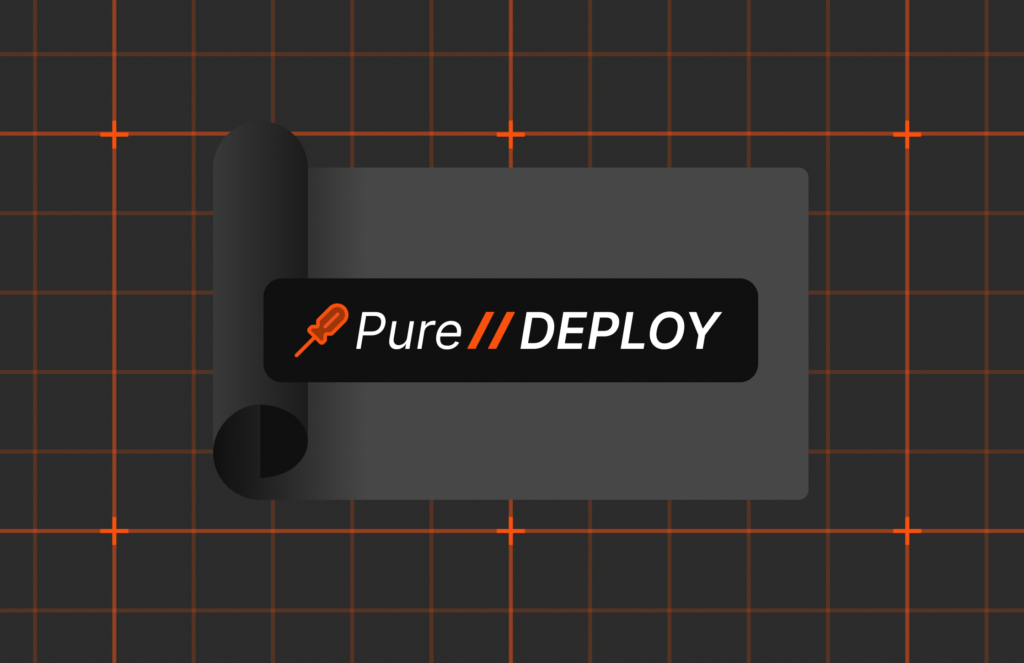Pure Storage® understands your modern data requirements. Modern data is mission-critical and multifaceted, not simple. We define modern data as having the following attributes: born-digital, multidimensional, multimodal; composed of files and objects; geo-distributed with a need for replication; always in-motion; analyzed in real-time at scale; and massively large.
A storage platform optimized for modern data has to deliver the unique combination of:
- Native concurrent file and object performance
- Simplicity at scale
- Ability to consolidate data from multiple sources and use cases
Only a truly unified fast file and object (UFFO) storage platform provides a complete solution for modern data and applications.
Legacy storage vendors struggle in this regard, offering distinct file storage and object storage platforms (usually based on hard disk). They require you to purchase, implement, configure, manage, maintain, and upgrade two entirely different platforms—one for files and another for objects.
Even many all-flash file platforms are retrofits of legacy storage arrays, some with operating systems and file systems that are more than 15 years old and originally architected for spinning disk. Similarly, object storage vendors have begun to retrofit their HDD-based offerings for all-flash, even though their platforms weren’t architected to take advantage of all-flash characteristics. And other competitors claim to support both file and object storage on a single platform but do it with multiple software stacks or file and/or object storage gateways that you have to purchase.
An unstructured storage platform delivers true unified fast file and object storage if it meets key criteria. These platforms:
- Are purpose-built for flash with built-in and efficient data services
- Support distinct native file and object stores, with access protocols and data services dedicated to each
- Deliver proven high-performance file and object storage, concurrently
- Concurrently handle mixed workloads with large files that need streaming and small files that need IOPS without performance degradation
- Are delivered as a single, simply scalable, and easily managed platform
Many of Pure’s competitors deliver solutions that appear to address the growing needs of organizations in the digital transformation journey. Dell has most notably looked to meet these challenges with its Unstructured.NEXT platform, introduced most recently as the PowerScale product family.
In contrast to Pure Storage FlashBlade®, we believe that PowerScale isn’t actually a new platform capable of meeting modern and unstructured data needs. PowerScale appears to be merely a rebranding of Isilon, a continued retrofitting of legacy hardware with a refresh of the 17-year-old OneFS file system, and new PowerEdge server-based nodes which lack the deep hardware-integration required for high-performance unstructured workloads. This approach is not what a truly UFFO storage platform requires. We doubt that PowerScale/Isilon could adequately address its customers’ modern unstructured data needs (especially with respect to object data). Rather, it merely magnifies the complexities and trade-offs of a legacy file system while attempting to modernize it.
4 Questions to Ask If You’re Evaluating PowerScale
1. Can a retrofit for all-flash with bolted-on data services deliver the performance required for UFFO?
Dell continues to retrofit its scale-out NAS hardware and refresh OneFS by bolting on new features. For all-flash capacity, Dell first introduced the F800 nodes with SSDs. However, the all-flash F800 nodes lack inline data reduction as its user-selectable SmartDedupe feature does deduplication in post-processing. To address this F800 node shortcoming, Dell then introduced the all-flash F810 nodes, which were retrofitted with hardware-based inline compression (via OneFS v8.2.1) but still lack inline deduplication. You cannot upgrade F800 nodes to F810 nodes, and the F810 node eliminates InfiniBand networking for node interconnectivity. Dell attempted to remedy the feature gap by subsequently introducing versions of OneFS that support inline deduplication and inline compression, both software-based and user-selectable. However, these software data-reduction features are not offered for F800 nodes, so customers with that product still have neither inline data reduction capabilities nor an upgrade path. So far, Dell has offered software-based inline deduplication and compression on the F810 nodes and, subsequently, the H5600 hybrid nodes. But only the F810 nodes have hardware-based compression. Neither the F800, any other legacy Isilon H series hybrid node, nor any A series archive node supports any inline data reduction.
Dell’s continued sale of and support for two different implementations of inline compression—hardware-based on the F810 nodes and software-based in OneFS on the H5600, F810, F600, and F200 nodes—is yet another example of PowerScale/Isilon complexity stemming from bolted-on features to legacy Isilon hardware and continued refreshes of outdated OneFS software. In short, it’s going to get in the way of performance and simplicity in production environments.
2. Can the legacy OneFS file system deliver a true object store?
Dell didn’t incorporate a true and distinct object store capability with the introduction of PowerScale OneFS v9.0. Doing so would have required a fundamental change in the OneFS file-system architecture. Dell seems much more interested in refreshing OneFS than re-architecting it for fast file and object capabilities. OneFS, therefore, remains just a legacy file system that has been refreshed for object protocol access to stored file data. Period. OneFS is neither (and does not have) a dedicated object store, nor does it support any object-specific data services.
With the rebranding to PowerScale and the introduction of the F600 and F200 nodes, Dell further retrofitted the legacy file system by adding S3 object-protocol support to v9.0. However, while touting PowerScale’s “high performance, multi-protocol S3,” Dell has specifically and purposefully positioned the new S3 object-protocol support only as “S3 object access.” Not as a fully-developed object store. To this end, Dell identifies PowerScale/Isilon’s specific use cases for OneFS with S3 access as backup and archive, file services, and enhanced multiprotocol data access. None of these use cases suggests true high-performance object-storage capabilities for PowerScale/Isilon via OneFS v9.0.
By adding S3 protocol access to OneFS, Dell merely introduced an S3 protocol adapter. This allows object protocol access to file data stored on the OneFS file system, as Dell detailed in the following diagram:

Dell specifically states that “clients can access OneFS cluster file-based data as objects.” By adding S3 protocol access to OneFS, Dell merely retrofitted OneFS into an object-protocol-on-file configuration.
3. Does access to stored file data through a bolt-on S3 protocol support my object storage needs?
Bolting an S3 protocol adapter to OneFS likely cannot deliver truly fast, high-performance object storage. As a legacy file system, OneFS lacks a distinct object store.
Dell makes no public statements about OneFS being a high-performance object store. Instead, Dell merely positions OneFS v9.0 as enabling PowerScale/Isilon’s “high-performance object access” to the stored file data. In an ECS “General Best Practices” white paper, Dell states that transactions per second “is the appropriate metric to measure small object performance and bandwidth is used to measure large object performance.”
While some small (i.e. 10KB size) object TPS performance data for PowerScale/Isilon is publicly accessible online, Dell has not reported any PowerScale/Isilon bandwidth specifications for large object performance. Until Dell formally publishes these performance specifications, its ability to serve (especially large size) object data with high performance remains entirely unproven. PowerScale/Isilon’s object-protocol-on-file configuration, as enabled by OneFS v9.0, can serve some object use-cases via multiprotocol access to stored file data. However, fundamentally, as a refreshed file system for object protocol access, it should not be used as a first-class object store for high-performance unstructured workloads.
4. Will I have to add additional object solutions such as Dell’s Elastic Cloud Storage (ECS) to bolster the deficiencies that PowerScale presents?
With OneFS having been retrofitted to an object-protocol-on-file configuration without dedicated (i.e. non-shared) object-protocol access or dedicated object-data services, PowerScale/Isilon lacks a true object store. It can’t deliver high-performance file and object storage capabilities.
So, what can Dell customers do if they require both the mature file capabilities of a long-standing scale-out NAS storage system and a mature object-storage platform with object-specific data services?
According to Dell’s disparate storage product portfolio, customers who require mature file and object storage should purchase both PowerScale/Isilon and ECS platforms. However, although ECS is intended as purpose-built object storage, it still falls short of meeting modern unstructured data requirements. Although it is—first and foremost—a node-level scalable object store, ECS is also legacy-architected for HDD capacity only. ECS includes only HDD-based nodes and, via v3.5, now supports only a single SSD per ECS node for read-caching purposes, with the requirement that all nodes in an ECS Virtual Data Center (VDC) must use an SSD for read-caching. ECS was principally architected for geographically distributed clusters and not as a stand-alone object storage cluster. Having been architected for geographic distribution means that it’s well-suited only for applications that tolerate very high latency. Regarding ECS’s performance limitations, Dell specifically states that “ECS was designed mainly for applications or use cases that don’t require high IOPS or low latency, so expect response times > 100ms.” This not only falls short of being highly performant, but isn’t even remotely performant by today’s modern unstructured data standards.
File and Object Data Are Not the Same Thing
File data remains fundamentally different from object data. They are two things with very different properties. Concurrent support of both file and object data types requires a system that is purpose-built to handle both. Dell doesn’t have this.
Because of the legacy architectures of its products, Dell cannot offer a single UFFO storage platform. It must continue to sell its customers multiple disparate products from two incompatible platforms.
With PowerScale (the so-called Unstrucutured.NEXT platform), we believe that Dell brings very little that’s new to address your modern unstructured data needs. It actually just perpetuates the complexities and trade-offs associated with a 17-year-old legacy-architected and HDD-based file system. Seemingly incapable of serving high-performance object data, PowerScale/Isilon appears unable to support the requirements for growing and increasingly valuable modern unstructured data.
Dell’s legacy Isilon-heritage product family remains a OneFS file system at its core, legacy-architected for HDD/hybrid capacity, despite having recently been rebranded as PowerScale. Dell has an extensive history of retrofitting Isilon hardware—and retrofitting perpetuates inherent architectural limitations. Such refreshes necessitate bolt-on modern features that incur complexity and trade-offs such as extra management, tuning, feature exclusions, and performance impacts. And they’re optional with extra cost to customers.
Thankfully, Dell customers have to wait no longer. Pure Storage’s FlashBlade remains the truly unified fast file and object storage platform, purpose-built to support the requirements for modern data—be that file and/or object data—for high-performance unstructured workloads.
But you don’t have to take our word for it: Consider what storage pros have to say about FlashBlade. Gartner’s Peer Insights for FlashBlade reports a rating of 4.9 out of 5, and 97% of contributors would recommend our UFFO platform.
With FlashBlade, you can transcend both the complexity and the trade-offs incurred by traditional storage vendors that insist on merely rebranding, retrofitting, and refreshing legacy-architected and HDD-based storage platforms in half-hearted attempts to support modern data requirements.
1. Page 2; www.dellemc.com/resources/en-us/asset/white-papers/products/storage/h17463-wp-dell-emc-isilon-design-and-considerations-for-smb.pdf
2. Page 8: https://www.dellemc.com/resources/en-us/asset/white-papers/products/storage/h18292-dell-emc-powerscale-onefs-s3-overview.pdf
3. Page 9: https://www.dellemc.com/resources/en-us/asset/white-papers/products/storage/h18292-dell-emc-powerscale-onefs-s3-overview.pdf
4. Page 29: https://www.dellemc.com/resources/en-us/asset/white-papers/products/storage/h16016-ecs-best-practices-guide-wp.pdf
5. Slide 11: https://vdocuments.mx/document/introducing-dell-emc-powerscale-a-fileuploads-a-708-powerscale-technology.html
6. https://en.wikipedia.org/wiki/OneFS_distributed_file_system
Meet True UFFO Storage
Only truly unified fast file and object (UFFO) storage provides a complete solution for modern data and applications.






